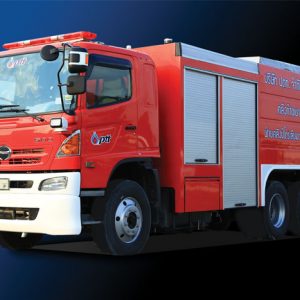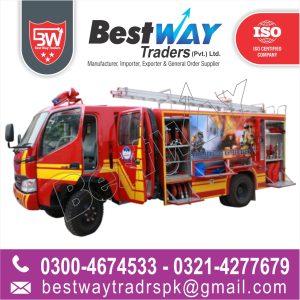Description
A rescue vehicle is a specialised vehicle used in technical rescue. It is designed to transport and provide the specialized equipment necessary for technical rescue.[1] They carry an array of special equipment such as the jaws of life, wooden cribbing, generators, winches, hi-lift jacks, cranes, cutting torches, circular saws and other forms of heavy equipment unavailable on standard trucks. This capability differentiates them from traditional pumper trucks or ladder trucks designed primarily to carry firefighters and their entry gear as well as on-board water tanks, hoses and equipment for fire extinguishing and light rescue. Most rescue vehicles lack on-board water tanks and pumping gear, owing to their specialized role. A rescue vehicle is typically operated by a rescue squad, but in some areas it may be integrated with emergency medical services or fire departments.
Rescue vehicles can be popular choices for incident command vehicles, national and local law enforcement (command/communications, SWAT, bomb response, etc.), rehab, HazMat incidents, light & air, urban search and rescue (USAR), and more. Furthermore, many rescue vehicles can be outfitted based on their target environmental setting, such as municipal, industrial, or natural. These configurations, determined by the operational agency and district, and worked out with the manufacturing company, provide a plethora of options for storage, response, equipment, size, and more.
Depending on the size of the vehicle and the equipment it carries, a rescue vehicle might fall into different categories, such as light, medium, heavy rescue, or technical rescue. While each of these categories often have overlapping tasks, they may be classified differently for the sake of dispatch on certain kinds of incidents. For instance, in Loudoun County, Virginia, the Loudoun County Fire and Rescue Department operates medium and heavy rescue apparatus, which are categorized based on equipment carried.[original research?] In Loudoun, to avoid confusion, a medium rescue is referred to as a squad truck or a technical rescue (or just squad), while a heavy rescue, which carries more equipment and is almost always larger, is referred to as a rescue (or heavy rescue). This differentiation exists to allow vehicles that would not normally be classified as medium rescues, such as certain rescue engines, or tower/ladder trucks to be dispatched on calls requiring a higher level of technical rescue, if the regular squad has been dispatched. This in turn leaves the heavy rescue apparatus available, as opposed to sending them on a call that could have been handled by a medium rescue. Many heavy rescue vehicles carry equipment for responses to multiple-casualty incidents, chemical spills and other situations. some rescue vehicles carry specialized rescue tools for all kinds of technical rescues including rope, water rescue equipment, various cutting and prying tools and other equipment useful in all kinds of rescue situations.






Reviews
There are no reviews yet.